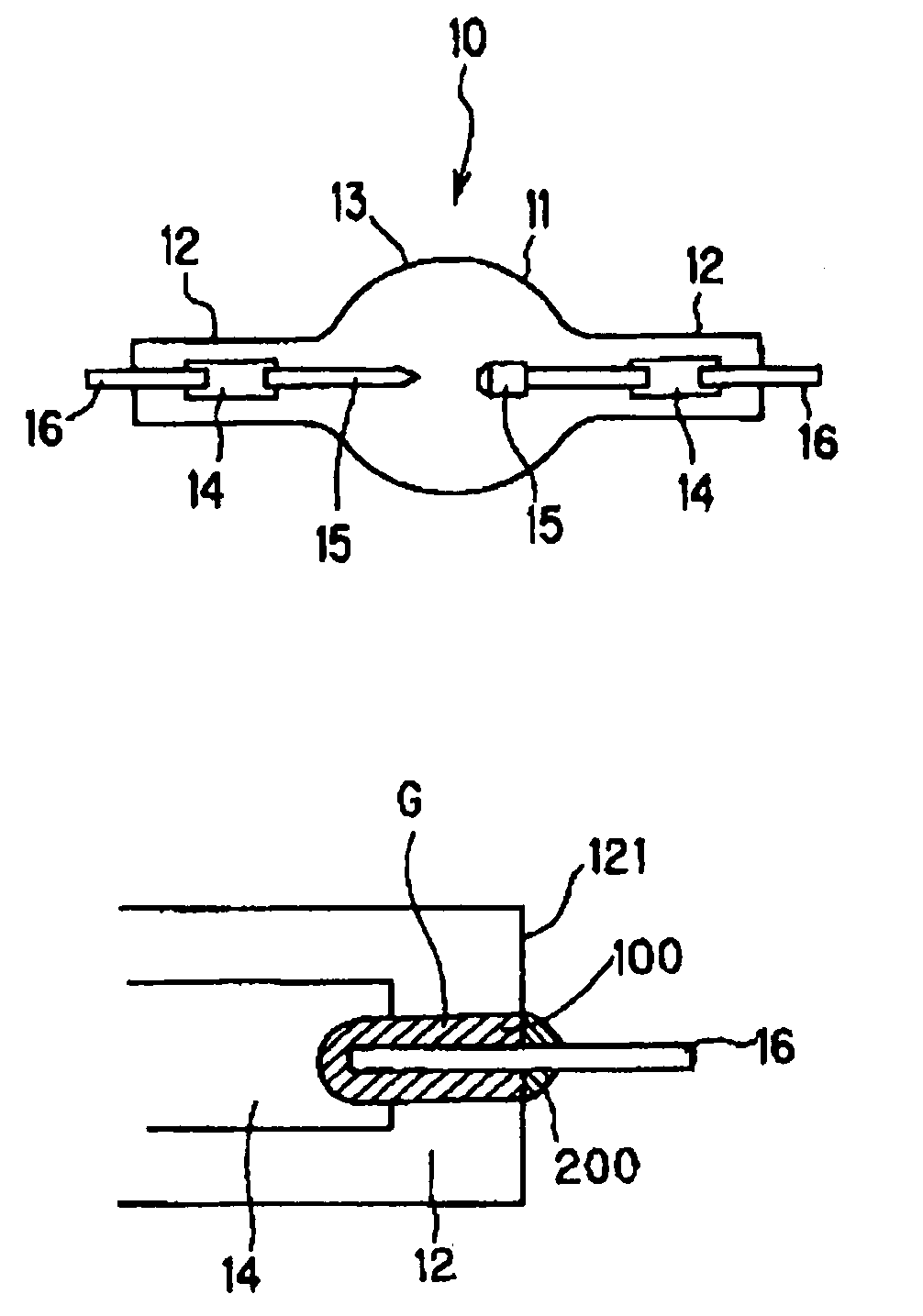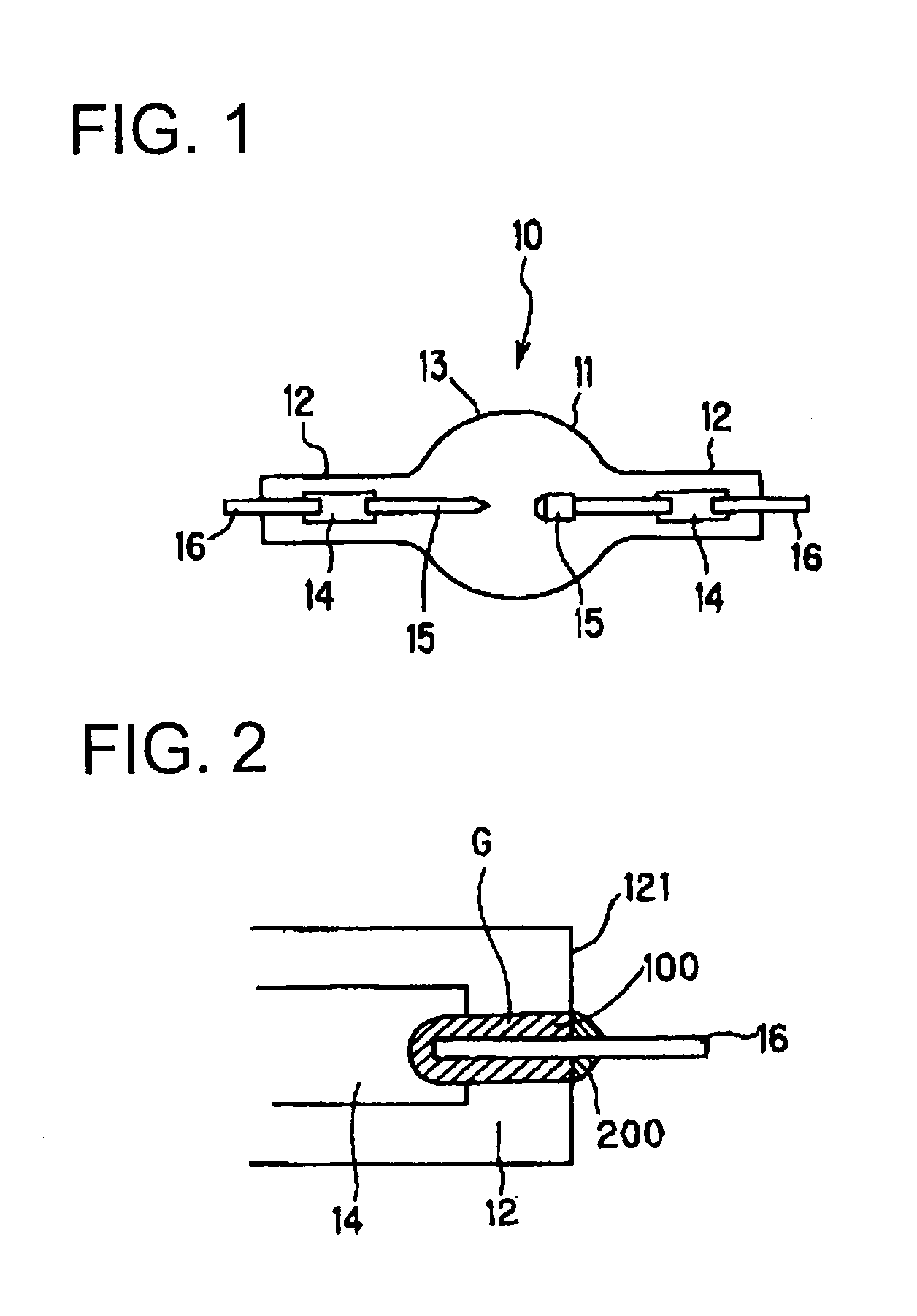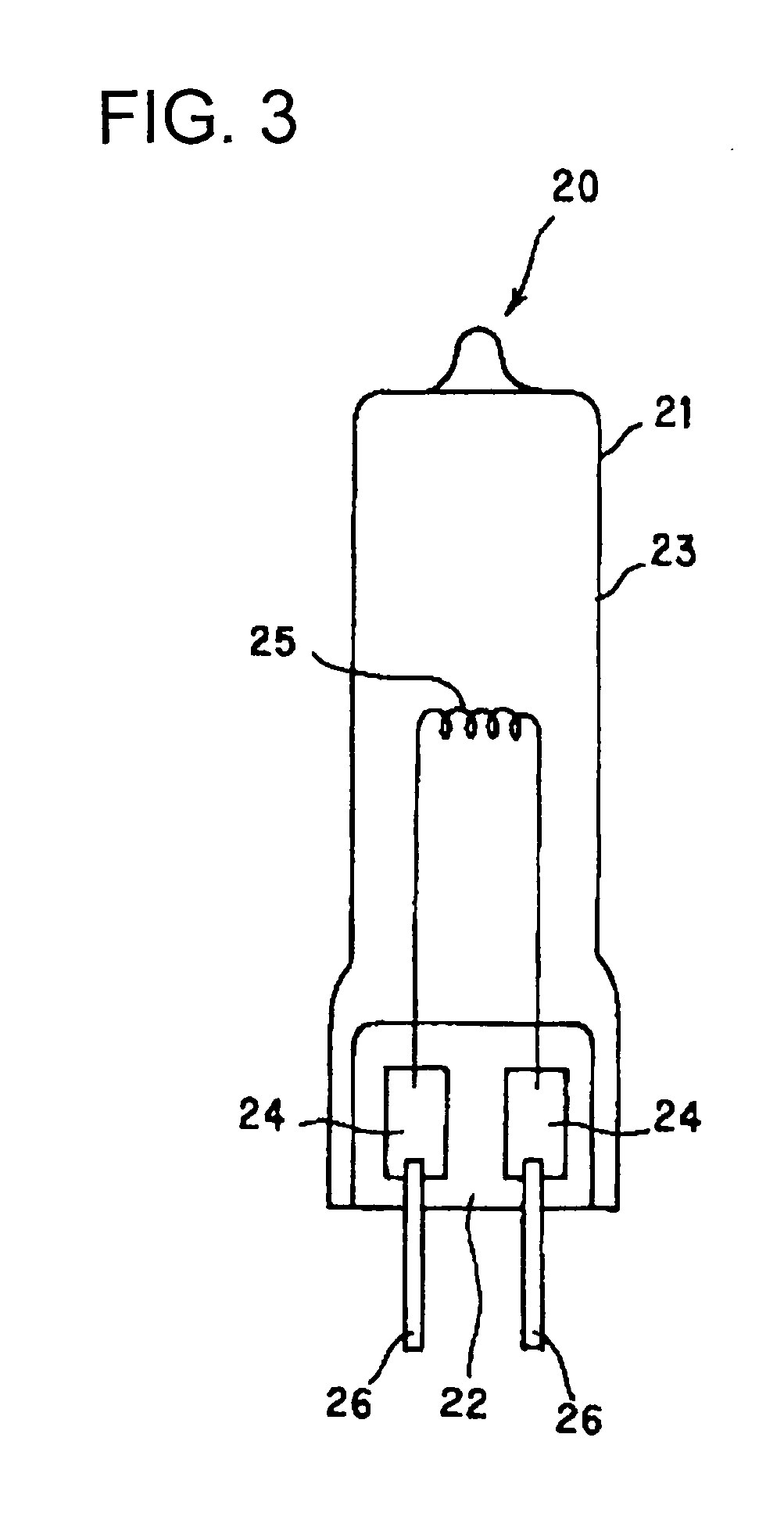Sealing agent for a foil sealed lamp
a sealing agent and foil technology, applied in the manufacture of cold cathode, electric discharge tube/lamp, electric discharge system, etc., can solve the problems of affecting the use affecting the service life of the lamp, so as to prolong the use life and improve the heat resistance of the sealing portion. , the effect of improving the temperatur
- Summary
- Abstract
- Description
- Claims
- Application Information
AI Technical Summary
Benefits of technology
Problems solved by technology
Method used
Image
Examples
Embodiment Construction
[0030]FIG. 1 is a diagram explaining the structure of a lamp according to the present invention.
[0031]A discharge lamp 10 has a discharge container 13 made of quartz glass and comprising a light emitting portion 11, and sealing portions 12 which are formed at both end of the light emitting portion 11. Each of the sealing portions 12 is air tightly sealed so as to bury a metallic foil 14 made of molybdenum. A pair of electrodes 15 are extended into the light emitting portion 11, each of which is connected to one end of each metallic foil 14. The other end of each metallic foil 14 is connected to a lead rod 16 made of molybdenum or tungsten so that the lead rod 16 extends outward from an end surface of the sealing portion 12. Furthermore, in a discharge container 13, 150 to 350 mg / cc mercury is enclosed as a light emitting substance.
[0032]FIG. 2 is an enlarged view of one of the sealing portions 12 in the lamp according to the present invention.
[0033]A gap G formed between the sealing...
PUM
 Login to View More
Login to View More Abstract
Description
Claims
Application Information
 Login to View More
Login to View More - R&D
- Intellectual Property
- Life Sciences
- Materials
- Tech Scout
- Unparalleled Data Quality
- Higher Quality Content
- 60% Fewer Hallucinations
Browse by: Latest US Patents, China's latest patents, Technical Efficacy Thesaurus, Application Domain, Technology Topic, Popular Technical Reports.
© 2025 PatSnap. All rights reserved.Legal|Privacy policy|Modern Slavery Act Transparency Statement|Sitemap|About US| Contact US: help@patsnap.com



